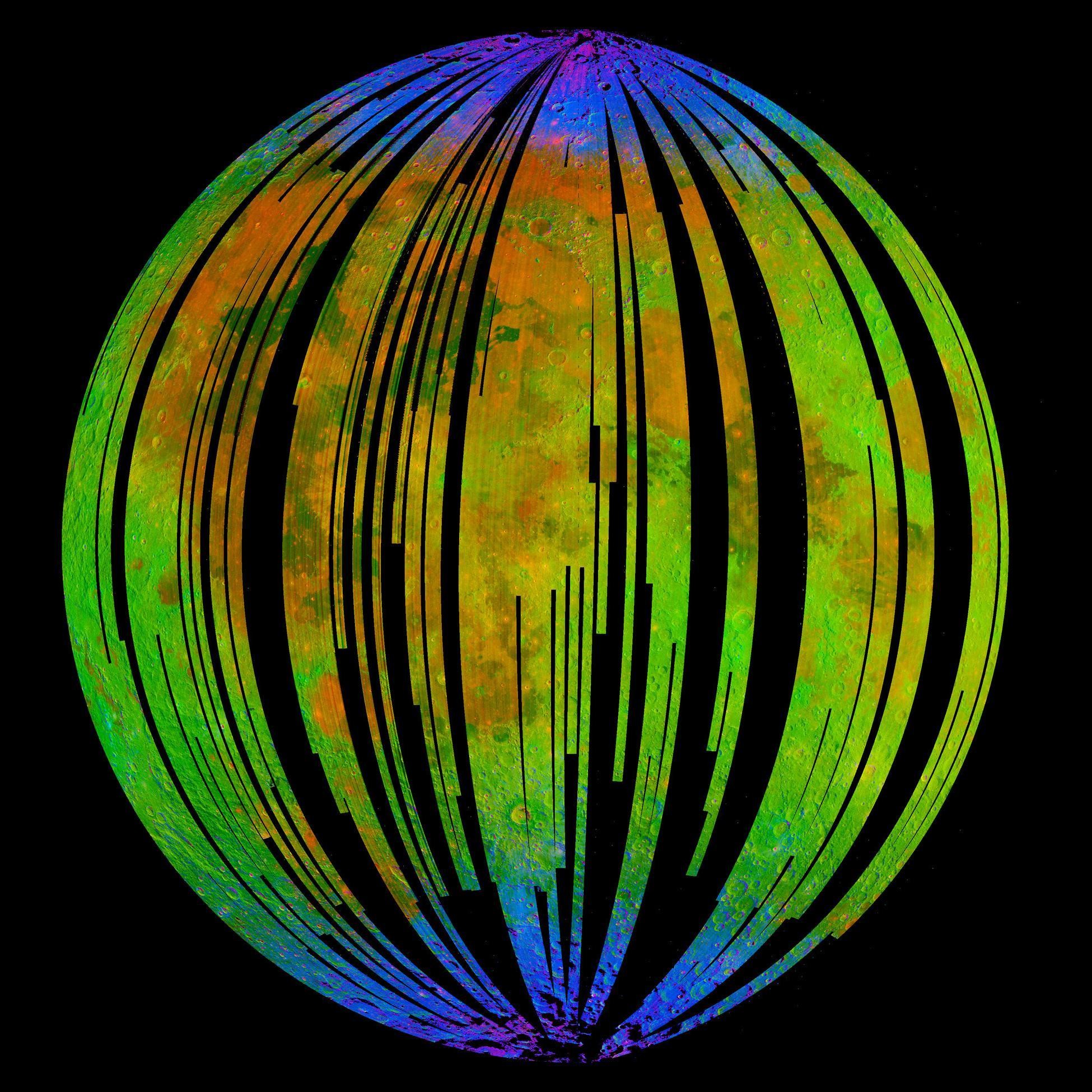The Moon, devoid of atmosphere and liquid water, shouldn’t rust. Yet, scientists have found evidence of hematite, a form of iron oxide that typically requires oxygen and water to form, on the lunar surface. This unexpected discovery, based on data from the Indian Space Research Organization’s Chandrayaan-1 orbiter, raises the question: how can the Moon be rusting?
The Puzzling Presence of Hematite
Hematite, a common iron oxide found on Earth, is a product of iron reacting with oxygen and water. Its presence on the Moon, confirmed by NASA’s Moon Mineralogy Mapper (M3) instrument, is baffling. The Moon lacks both a substantial atmosphere and liquid water, making the formation of hematite seemingly impossible. The M3 data revealed a close spectral match with hematite, particularly concentrated at the lunar poles, further deepening the mystery.
Blue areas in this image represent water ice concentrated at the Moon’s poles, where hematite was also discovered.
Unraveling the Rust Mystery: A Three-Part Hypothesis
Scientists propose a three-pronged hypothesis to explain this lunar rust:
1. Earth’s Oxygen: An Unexpected Source
While the Moon lacks a substantial atmosphere, it receives trace amounts of oxygen from Earth. Our planet’s magnetic field trails behind it, carrying oxygen from the upper atmosphere. This oxygen travels along Earth’s magnetotail, reaching the Moon approximately 239,000 miles away. This theory is supported by the higher concentration of hematite on the Moon’s near side, which faces Earth.
2. Protection from the Solar Wind
The solar wind, a stream of charged particles from the Sun, bombards the Moon with hydrogen. Hydrogen acts as a reducer, hindering the oxidation process necessary for rust formation. However, Earth’s magnetotail provides a shield, blocking over 99% of the solar wind during certain phases of the Moon’s orbit, particularly during the full Moon. These periods of reduced hydrogen exposure create windows of opportunity for oxidation and rust formation.
3. Water Molecules in Lunar Soil
Although most of the Moon is dry, water molecules are present in the lunar soil. Micrometeorite impacts could release these water molecules, allowing them to mix with iron in the soil. The heat generated by these impacts might accelerate the oxidation process, potentially contributing to hematite formation. Additionally, the dust particles themselves could carry water molecules, further facilitating the reaction.
The Moon, seemingly an unlikely candidate for rust formation.
Further Exploration and Future Missions
This intriguing discovery highlights the complexity of chemical processes in our solar system. Further research and data are needed to fully understand the interplay of these factors in lunar rust formation. Future missions, including NASA’s Artemis program and the Lunar Trailblazer orbiter equipped with the High-resolution Volatiles and Minerals Moon Mapper (HVM3), will provide valuable insights into this phenomenon and potentially uncover more secrets hidden within our celestial neighbor. The presence of hematite on the Moon suggests that even seemingly inhospitable environments can harbor surprising chemical activity, potentially expanding our understanding of planetary evolution and the search for life beyond Earth.
